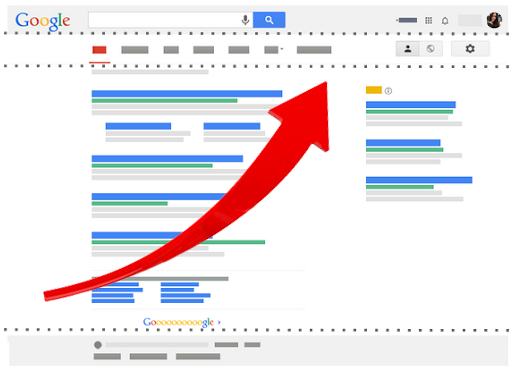SEO strategy has evolved dramatically since the start of the Internet. It used to be that stuffing your website full of keywords was the way to go, even if it resulted in crowded web design and an unfriendly user experience. Today’s SEO practices are user-focused. Keywords are still important but they are just one of many elements that influence the likelihood of your brand being displayed in search results.
At the domain level, there are a few minor adjustments you can make to dramatically improve your SEO strategy.
#1 Keywords in the domain
Customers always ask us for advice on selecting the main domain for their brand – short, long, generic, etc. Standard practice is to register a short domain name that includes keywords relating to your business. Today, brands should think of keywords in terms of strategic placement. New generic domain names can help achieve this.
Since the new gTLD program is still fairly new there is more availability in the space and a greater chance for brands to get the name they want. With the new domain names, you can have keywords before and after the dot. For example, instead of getting a domain name like https://homeloans.com (which would cost a leg and an arm to acquire) you could register https://home.loans. This name satisfies the main elements we are looking for in a great name- it’s short and keyword-rich.
Aside from including keywords in the domain name, there is an SEO strategy for ranking higher in local search results. Country code domains are used widely across the globe. We aren’t as accustomed to seeing them in the United States, but in your travels, you have most definitely come across them. Websites operating under a country code domain pose an advantage when it comes to international SEO performance. The SEO mogul, Moz, explains why ccTLDs outperform other domain extensions in search results:
When a site uses a ccTLD, Google assumes that site (and all the content on it) is specifically relevant to the geographic area targeted by the ccTLD and should appear on SERPs in that area.
If all things equal in quality, authority, relevance, trustworthiness and other optimization factors, between https://example.fr, https://example.us, and https://example.com, https://example.fr will rank better in a French user’s SERP than https://example.us and https://example.com.
Country and region-specific domains are the simple and single strongest way to show search engines and users that your site content is specifically targeted to a geographical area.
#2 Readability in the URL
Every SEO strategy begins with the domain name and stems from there. Ensure your URLs are easy to read and understand for all of your website pages including product pages and your blog. Always match the URL string to your page titles and article titles (which should both include the targeted keyword for that page) so users can know what to expect and you can rank for those keywords.
Some SEO strategy is cut and dry, proven methods of ranking higher in search results while others are vanity based suggestions for improving the way a user interacts with your site. Using hyphens and underscores to break up words in the URL is one simple way to make your domain easier to read for your visitors.
For example, this blog post is titled “SEO Strategy for Better Domain Ranking” so a perfect match URL would read
You can also remove stop words (the words you do not capitalize in your article titles and such), for example in this article URL we removed the word “for”. Stop words can be included and don’t hurt your SEO strategy, however you want your URL to be short and concise which is why we recommend omitting them when possible.
Limit the number of folders in your URL, the more folders there are, the more complex your domain looks to users and search engines. An additional folder in this blog post URL would look something like
Having additional folders doesn’t harm your performance, per say, but they do make it considerably more difficult to edit URL strings in the future if need be.
#3 General SEO strategy housekeeping
The goal is to make it as simple as possible for users to visit your website. Limit your redirects. It’s just fine to have URL A redirect to URL B, but that’s where it should stop. If URL A redirects to URL B which redirects to URL C, it’s technically okay but not ideal (you should point URL A to URL C directly) but if it continues to three redirects or more you’ll start seeing trouble for your website. You want to make it as easy as you can to get from point A to point B (your website!).
Similarly, if you have multiple URLs featuring duplicate content use a redirect to point one page to the other or consolidate the content with a canonical. If you don’t do this Google will determine important information for search results on your behalf, like which URL to display to users in search results. Having duplicate pages with similar content can hurt your SEO performance by increasing the time Google takes to crawl your site.
SEO strategy can sound like an intimidating feat to those in small business or who are new to online branding, however, with a few minor adjustments at the domain level you can dramatically improve your domain ranking in search results.




